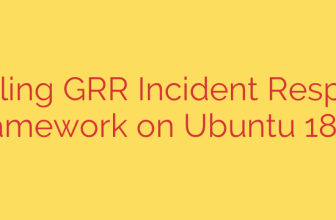
Microsoft 365 Education Under Fire for Student Data Privacy Violations
In classrooms around the world, Microsoft 365 Education is a cornerstone of modern learning, providing students and teachers with essential tools for collaboration and productivity. However, a recent investigation by a European data protection authority has raised serious concerns, revealing that the platform may have been unlawfully collecting and processing student data.
The findings conclude that Microsoft’s data practices within its educational suite lack the necessary transparency and legal grounding required by stringent data privacy laws. This development serves as a critical alert for educational institutions everywhere that rely on this technology.
The Core of the Investigation: What Went Wrong?
The probe focused on how Microsoft processes personal data when students and teachers use the web-based versions of its Office 365 software. Investigators conducted a deep dive into the data streams sent back to Microsoft, uncovering several critical issues related to data collection, transparency, and user rights.
The report highlights that without clear insight into what data is being collected and for what purpose, schools cannot fulfill their legal responsibility to protect their students’ privacy.
Key Findings on Data Collection and Transparency
The investigation brought several alarming practices to light, which ultimately led to the conclusion that Microsoft’s data processing was in breach of privacy regulations. The primary concerns include:
- Lack of Transparency on Data Collection: Microsoft failed to clearly and completely inform users about the personal data it was collecting. A significant amount of data, including diagnostic and telemetry information, was gathered from the use of the software, but the specific details were not adequately disclosed to schools or students.
- Unlawful Basis for Data Processing: A substantial portion of the data was collected without a proper legal basis. The watchdog found that Microsoft was collecting data for its own purposes—such as software improvement and business analytics—without the explicit, freely given consent required by law. The default settings enabled broad data collection that went beyond what was strictly necessary to provide the educational service.
- Vague and Insufficient Data Retention Policies: It was unclear how long student data was being stored by Microsoft. The lack of specific retention periods means sensitive information could be held indefinitely, increasing the risk of misuse or a data breach.
- Data Transfers Without Adequate Safeguards: The investigation noted that data was being transferred to countries outside the European Economic Area without ensuring that the data was protected by equivalent privacy standards, a key requirement under GDPR and similar privacy frameworks.
What This Means for Schools and Students
The implications of these findings are significant. The very tools meant to empower learning could be compromising student privacy on a massive scale. When sensitive data is collected without consent or transparency, it creates detailed digital profiles of children that can follow them for life.
For educational institutions, this ruling is a major wake-up call. Schools act as data controllers for their students and are legally responsible for the technology they implement. Relying on a service that doesn’t comply with privacy laws puts the school, its staff, and its students at considerable risk.
Actionable Steps for Educational Institutions
In light of these developments, school administrators and IT departments must take proactive steps to safeguard student data. It is no longer enough to simply trust that a major technology provider is compliant.
- Conduct a Data Privacy Audit: Review your school’s use of Microsoft 365 and other educational technology. Understand what data is being collected and where it is being sent.
- Review Data Processing Agreements (DPAs): Scrutinize the legal agreements you have with technology vendors. Ensure they clearly define the roles, responsibilities, and limits of data processing. Push for stronger terms that prioritize student privacy.
- Demand Greater Transparency from Vendors: Use your position as a customer to demand clear, unambiguous information from Microsoft and other ed-tech providers about their data practices.
- Configure for Maximum Privacy: Do not rely on default settings. Manually configure software settings to minimize data collection and telemetry wherever possible.
- Educate Staff, Students, and Parents: Foster a culture of digital literacy. Ensure everyone in your school community understands the importance of data privacy and how to protect their personal information online.
Ultimately, this investigation underscores a fundamental truth of the digital age: convenience cannot come at the cost of privacy, especially when it comes to children. Educational institutions have a profound responsibility to protect the students in their care, and that duty extends to their digital lives.
Source: https://go.theregister.com/feed/www.theregister.com/2025/10/13/microsoft_365_education_gdpr/








